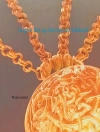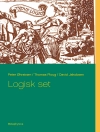In ‘The Flags of the World, ‘ F. Edward Hulme presents a comprehensive examination of vexillology, the study of flags, through a meticulously detailed lens. The book weaves together historical narratives and artistic interpretations, showcasing the evolution and significance of national symbols across the globe. Hulme employs a blend of academic rigor and accessible language, making complex ideas about heraldry and symbolism understandable to a diverse audience. The work is enriched with illustrations that reflect not only the flags themselves but also the cultural and political landmarks crucial to their histories, situating the reader in a broader socio-political context. F. Edward Hulme, a noted figure in both art and scholarship, drew on his background in natural history and illustration to delve into the visual language of flags. His passion for detail and his extensive travels undoubtedly informed his insights into the cultural significance of these emblems. Hulme’s dual interest in art and history provides a rich tapestry for understanding the flags not merely as fabric but as narratives of identity and belonging. This book is a must-read for enthusiasts of history, art, and culture, as well as for anyone seeking to understand the complex narratives that flags represent. ‘The Flags of the World’ invites readers to reflect on the myriad ways in which these simple pieces of cloth convey powerful messages of unity, conflict, and nationhood.
Despre autor
F. Edward Hulme was a noted English author, teacher, and naturalist best recognized for his contributions to the study of symbolism, heraldry, and nature. He possessed a passion for the historical and cultural significance of flags, evidenced by his seminal work, ‘The Flags of the World.’ His attention to detail and comprehensive research on the subject earned the book considerable regard among vexillologists and historians. Hulme’s literary style was characterized by meticulous descriptions and a scholarly approach, making his work a valuable resource for both academic study and enthusiasts of cultural symbolism. While not as widely known as some contemporaries in the field of natural history and heraldry, Hulme’s contributions have been deemed significant for the depth of knowledge and a clear understanding of the intricate meanings and historical context behind world flags. The influence of his work extends beyond mere academia, serving as a reference for those interested in the evolution of national symbols and the stories they tell. His scholarly endeavors reflected a lifetime devoted to education and the pursuit of knowledge across several disciplines.












